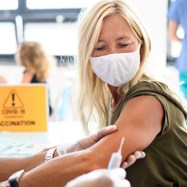Using space data to map populations
Every five years, between 35 and 40 million people migrate. Keeping track of where people are is vital for social welfare, crisis response, development and top-level decision making. Space data is critical to this.
The interdisciplinary WorldPop research group at the University of Southampton is highly-skilled in population mapping and a key international player in the field. The group relies on data from satellites to inform its work.
WorldPop Director Andy Tatem, Professor of Spatial Demography and Epidemiology at the University of Southampton, outlined: “Our core work is around supporting governments with population mapping and estimations. There is a whole set of countries that have not done a census in 20 to 30 years, and there are also lots of countries that were supposed to do a census in 2020 or 2021, but couldn’t because of COVID leading to budget being taken away or they couldn’t go knocking door to door.
“A lot of our work at the moment is working with UN agencies and national governments on developing ways to produce population estimates. That involves many datasets that have been built from satellite imagery.”
WorldPop was initiated in 2013, combining population projects across Africa, Asia and the Americas. Since then, the group’s work has informed government recommendations and actions around the world.
Professor Tatem said: “The data have led to, for instance, five million more children in Afghanistan receiving a set of vaccines against diseases such as polio, measles, mumps and rubella. In northern Nigeria, our data estimates were used in the successful elimination of polio from the country.
“In a few countries, WorldPop estimates have been used to fill gaps where a census has been conducted, but certain areas couldn’t be included because they were inaccessible due to conflict or gang control. We have been able to provide them with a way to fill those data gaps, and this information is used as official statistics to allocate aid, resources and representation in parliament.”
Read the full story, and lots more about space-related research at the University of Southampton, in the Space at Southampton 2022 magazine.
-
Hamir Patel
hamir.patel@russellgroup.ac.uk
020 3816 1316
-
Stephanie Smith
020 3816 1310
-
Douglas Dowell
douglas.dowell@russellgroup.ac.uk
020 3816 1312
 X
X


